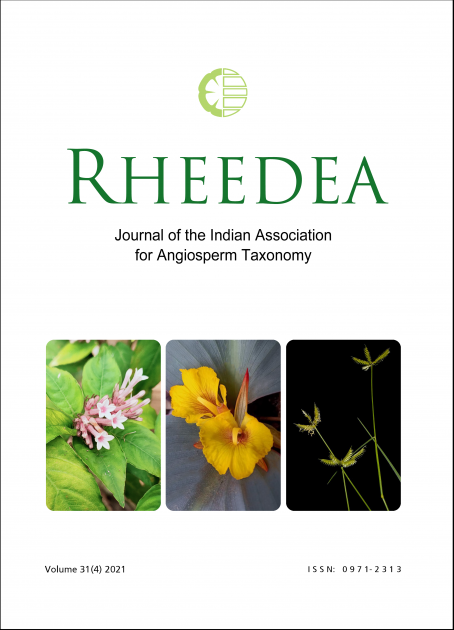Diversity in aerial root anatomy of Bulbophyllum (Orchidaceae) and its significance as source for subsidiary characters in species identification
Madhavi Singh, Vimala Y., Lavania S. & D. Verma
Published on : 31-Dec-2021
DOI : https://dx.doi.org/10.22244/rheedea.2021.31.04.02
DownloadAbstract
The morphology and anatomy of aerial roots of twelve epiphytic species of Bulbophyllum Thouars were investigated to analyse the interspecific variation and their potential for species differentiation and identification. Anatomical features of various structures such as velamen tissue, exodermis, cortex, endodermis, stele, thickening pattern, the occurrence of raphides, crystals, druses in the cortical region and types of tracheoidal (water storage) cells were examined. Tilosomes were lamellate in half of the species studied, while in B. umbellatum Lindl. they were spongy. The exodermal cells showed uniform cell wall thickening all around cells in all the species analysed except in B. affine Wall. ex. Lindl. and B. striatum (Griff.) Rchb.f. where they were inverted U-shaped. Raphides, druses and a few geometrically shaped calcium oxalate crystals were found in the cortical cells, while they were absent in B. affine and B. umbellatum. A positive correlation was found between stele diameter with root area and cortex thickness, number of xylem strands with root diameter and velamen thickness, velamen thickness with root diameter and stele diameter as in root cross sections. The variation in exodermis thickening, ideoblast cells, crystal forms, presence or absence of chloroplast cells in cortex, tilosome type as observed in the present study may be useful as potential distinguishing features and additional characters for taxonomic identification of Bulbophyllum species.
